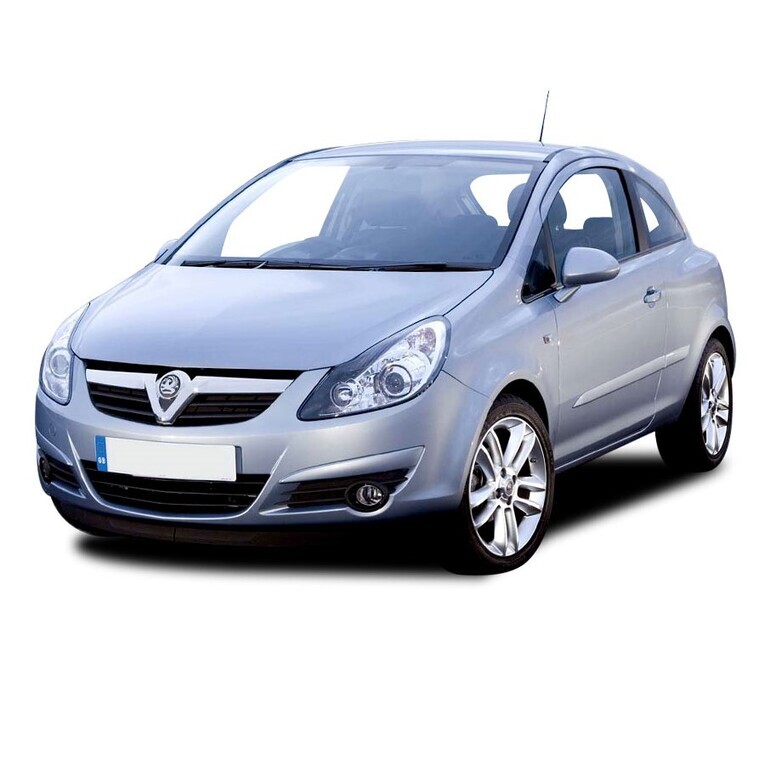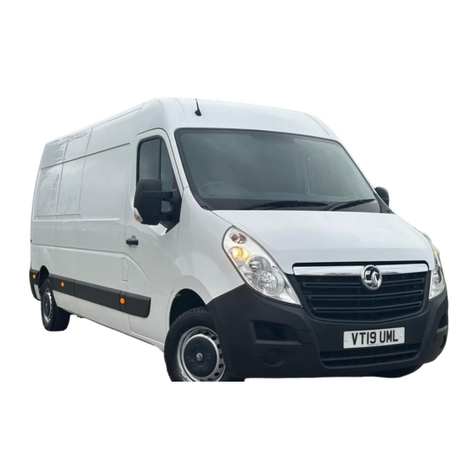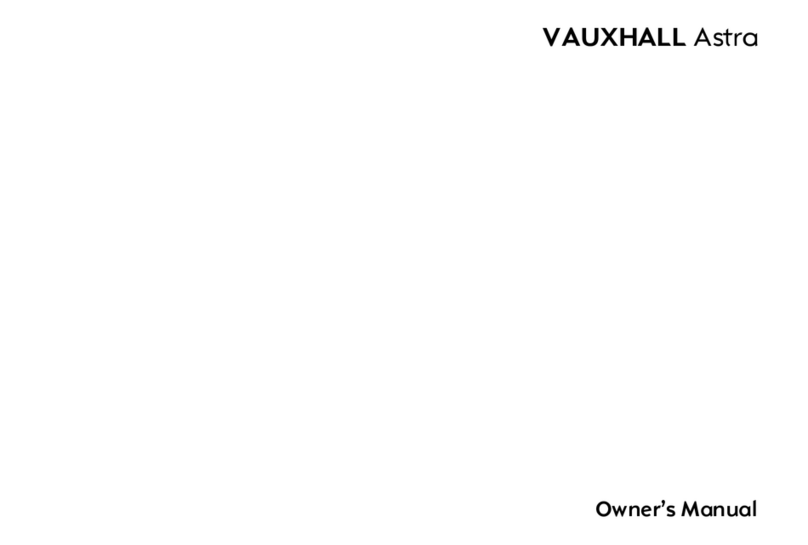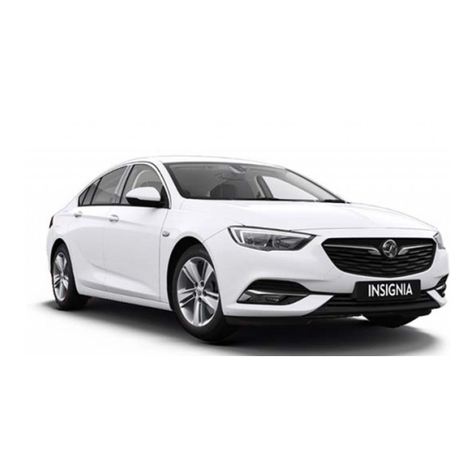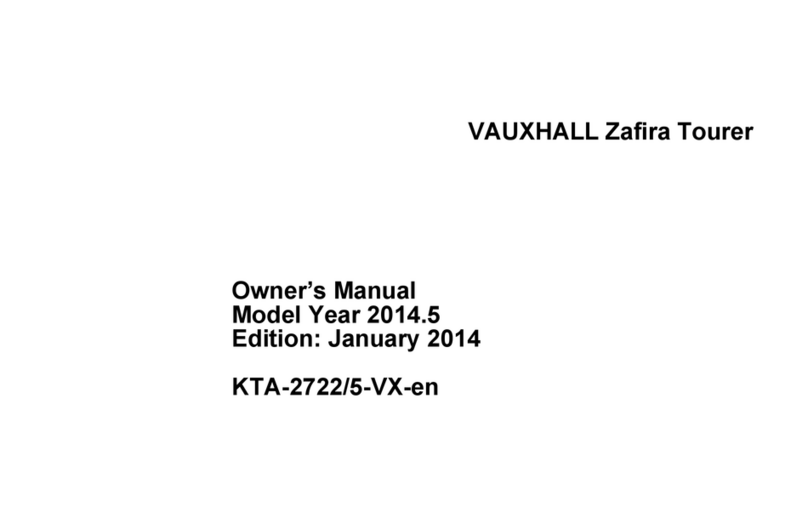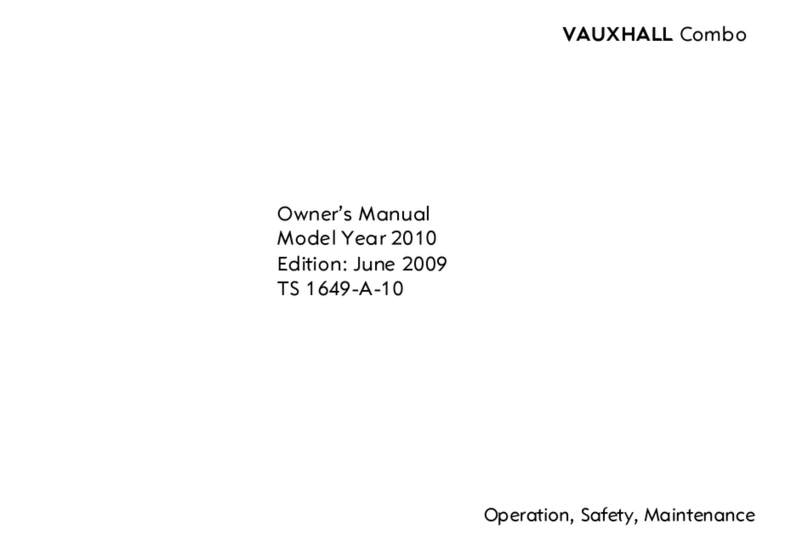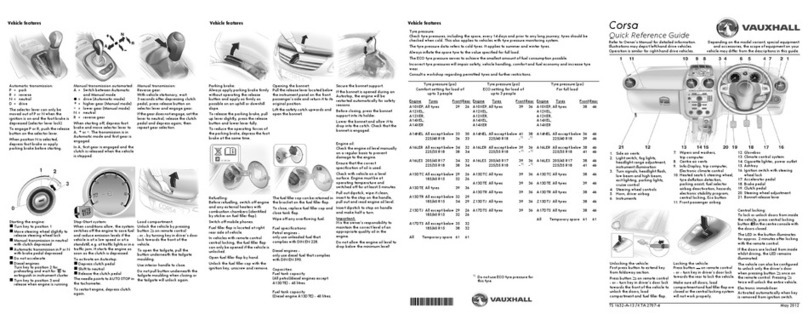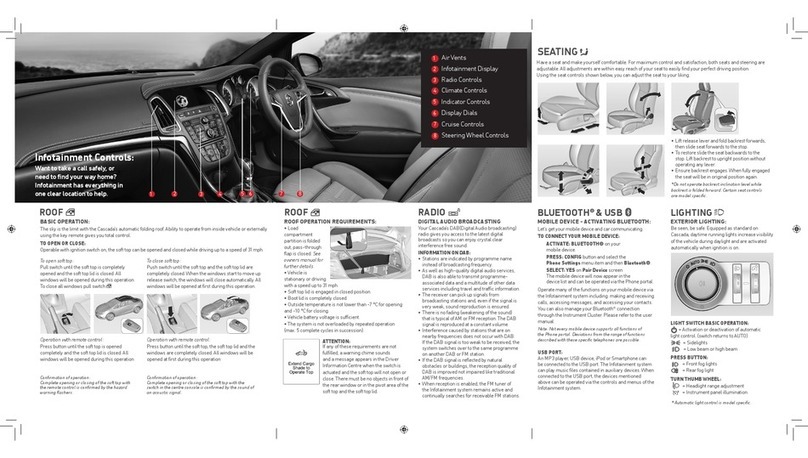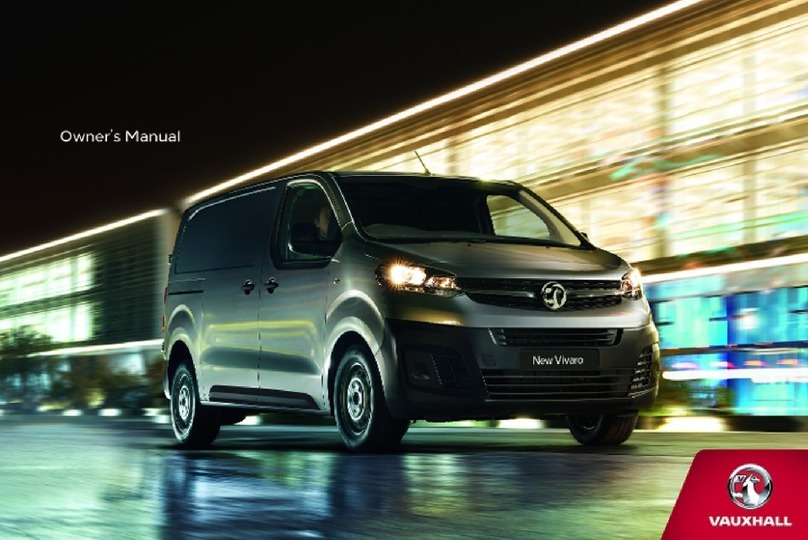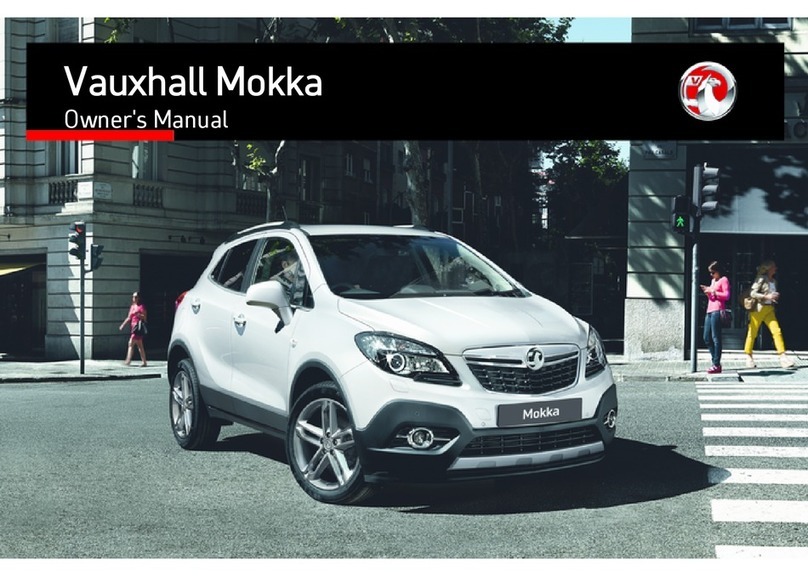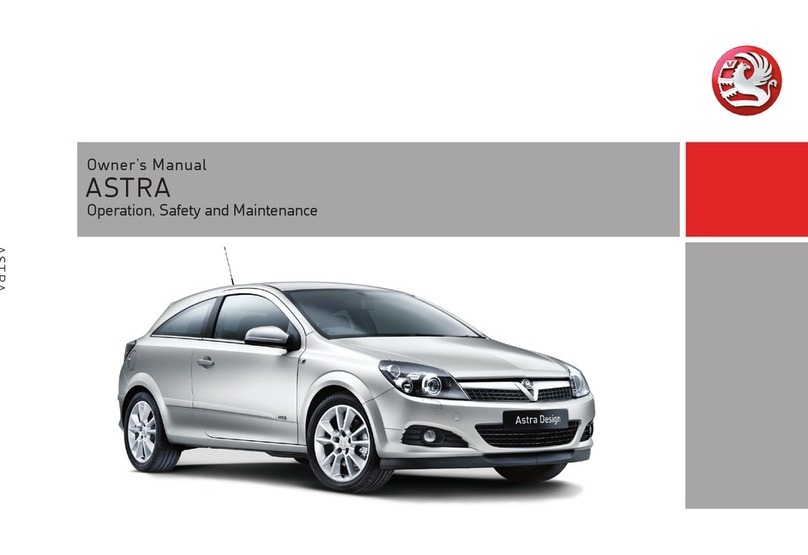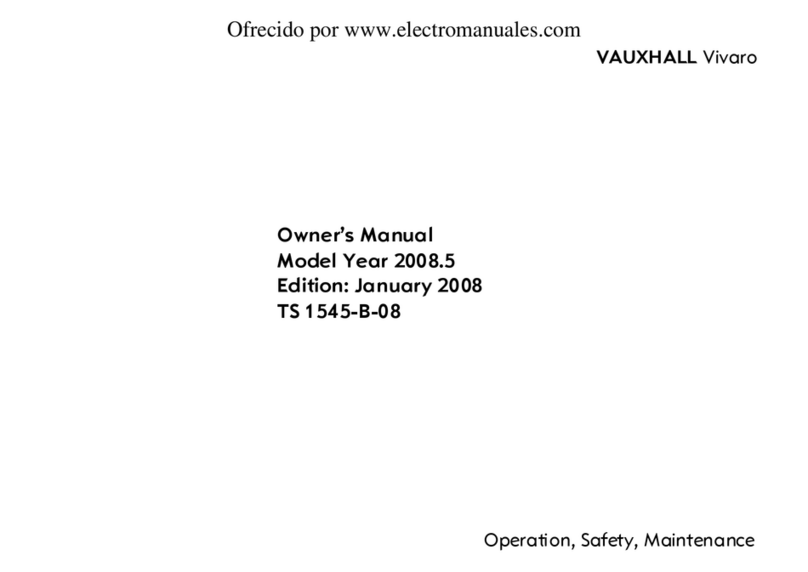Vehicle features Antara
Quick Reference Guide
Refer to Owner’s Manual for detailed information.
Illustrations may depict left-hand drive vehicles.
Operation is similar for right-hand drive vehicles.
Depending on the model variant, special equipment
and accessories, the scope of equipment on your
vehicle may differ from the descriptions in this guide.
KTA 2719-2 January 2013
*KTA-2719-2*
Vehicle features Vehicle features
Unlocking:
Press button q.
The doors, load compartment and
fuel filler flap are unlocked.
Open the doors by pulling the
handles.
Locking:
Close doors, load compartment,
fuel filler flap, bonnet, windows and
sunroof.
Press button p.
The doors, load compartment and
fuel filler flap are locked.
Press button ptwice within
3 seconds to activate anti-theft
alarm system and deadlock all
doors.
Do not deadlock doors if there are
people in the vehicle! The doors
cannot be unlocked from the
inside.
To lock from inside the passenger
compartment, close all doors and
press left part of switch min
driver’s door. To unlock, press right
part of switch m.
Electronic immobiliser:
Activated automatically when key
is removed from ignition switch.
1. Side air vents
2. Fixed air vents
3. Turn signals, low/high beam,
headlight flash, exit lighting,
parking lights, cruise control
4. Steering wheel controls,
trip computer
5. Horn
6. Instruments
7. Wiper and washer systems
8. Info-Display, check control,
tyre pressure monitoring
system, trip computer
9. Centre air vents
10. Hazard warning flashers,
stop-start system eco button,
Electronic Stability Control,
Descent Control, parking assist,
anti-theft alarm system LED,
folding exterior mirrors
11. Infotainment system
12. Front passenger airbag
13. Front passenger airbag system
status LED’s, front passenger
seat belt control indicator
14. Glovebox
15. Fuse box
16. Climate control system
17. Ignition switch with
steering wheel lock
18. Accelerator pedal
19. Driver airbag
20. Brake pedal
21. Clutch pedal
22. Steering wheel adjustment
23. Bonnet release
24. Coin storage
25. Card holder
26. Light switch
Manual transmission:
R=Reverse
With the vehicle stationary, wait
3 seconds after depressing clutch
pedal and engage the gear.
If the gear does not engage, set
lever to neutral, release the clutch
pedal and depress again; then
repeat gear selection.
Do not grind the clutch
unnecessarily.
When operating, depress clutch
pedal fully. Do not use the pedal as
a foot rest.
Automatic transmission,
Automatic mode:
P=Park
R= Reverse
N=Neutral
D=Drive
Selector lever can only be moved
out of Por Nwhen ignition is on
and foot brake is applied.
To engage Por R, push release
button on selector lever. Never shift
to P or Rwhen vehicle is moving.
Engine can only be started with
lever in position Por N. Depress
foot brake or apply electrical
parking brake before starting.
The selected mode, P, R, Nor Dis
shown in the transmission display.
Automatic transmission,
Manual mode:
Move selector lever out of
position Dto the left.
+= Shift to higher gear
-= Shift to lower gear
Tip selector lever in the appropriate
direction. It then returns to the
centre position.
If a higher gear is selected when
vehicle speed is too low, or a lower
gear is selected when vehicle speed
is too high, the shift is not executed.
The selected gears 1 -6 in manual
mode are shown in the
transmission display.
Automatic transmission,
Fuel economy mode:
In automatic mode, press s
button; control indicator s
illuminates in the instrument
cluster.
Fuel economy mode allows the
transmission to adapt gearshift
patterns and adapts certain
electronic system settings,
improving the vehicle’s fuel
economy.
Do not use fuel economy mode
whilst towing, e.g. a trailer.
Starting the engine:
Turn key to position ACC
Move steering wheel slightly to
release steering wheel lock
Manual transmission in neutral
with brake and clutch pedals
depressed
Automatic transmission in Por N
with brake pedal depressed
Do not accelerate
Diesel engines: turn key to ON
for preheating, wait for control
indicator !to extinguish
Turn key to START and release
Before restarting or to switch
engine off, turn key back to
position LOCK.
Stop-start system:
When conditions allow, the system
switches off the engine to save fuel
and reduce emission levels if the
vehicle is at a low speed or at a
standstill, e.g. at traffic lights or in a
traffic jam. It starts the engine as
soon as the clutch is depressed.
To activate an Autostop:
Depress clutch pedal
Shift to neutral
Release the clutch pedal
The needle points to AUTOSTOP in
the tachometer.
To restart engine, depress clutch
pedal again.
Opening the bonnet:
To open bonnet, pull bonnet
release lever /located below
instrument panel on driver’s side.
The bonnet will then be unlocked
and will partially open. Return
release lever to its original position.
Do not pull release lever while the
vehicle is moving.
Unlocking and opening the
tailgate:
Press button qon remote control
to unlock tailgate together with the
doors. To unlock from inside
passenger compartment, press
right part of central locking
switch m in driver’s door.
To open tailgate, operate button
above number plate and lift
tailgate.
With engine running, tailgate will
only unlock when electrical parking
brake is applied or automatic
transmission is in position P.
Closing and locking the tailgate:
Use the interior handle on the
underside of the tailgate to assist
when closing. Close the tailgate by
pushing it down so it latches
securely.
Press button pon remote control
to lock tailgate together with the
doors.
To lock tailgate from inside the
passenger compartment, press left
part of central locking switch m in
the driver’s door.
To open completely, locate safety
catch found slightly left of centre
on underside of bonnet. Push catch
upwards and lift bonnet gently.
The bonnet is held open
automatically.
If the bonnet is opened during an
Autostop, the engine will be
restarted automatically for safety
reasons.
To close bonnet, lower it gradually
and allow it to fall into the catch
under its own weight. Check that
the bonnet is engaged.
Electrical parking brake:
Pull switch J, parking brake
operates automatically with
adequate force. For maximum
force, e.g. when parking with trailer
attached or on inclines, pull switch
Jtwice.
The parking brake can always be
activated, even if the ignition is off.
Before leaving the vehicle, check
parking brake status.
To release, switch on ignition, keep
brake pedal depressed and push
switch J.
Drive away function
Selecting a gear or engaging drive
gear (automatic transmission) and
then depressing the accelerator
pedal releases electrical parking
brake.
Refuelling:
Before refuelling, switch off engine
and any external heaters with
combustion chambers. Switch off
mobile phones. Fuel filler flap is
located at left rear side of vehicle.
The fuel filler flap can only be
opened if the vehicle is unlocked.
Push fuel filler flap to release.
Unscrew filler cap anticlockwise
and retain cap in the bracket on
the fuel filler flap. Wipe off any
overflowing fuel immediately.
Petrol engines - use unleaded fuel
that complies with EN 228 or
E DIN 51626-1 or equivalent.
Diesel engines - use diesel fuel that
complies with EN 590.
Fuel tank capacity - 65 litres.
Vehicle security
Winter tyres:
Winter tyres improve driving safety at temperatures below 7 ºC and should therefore be fitted on all wheels.
Tyres of size 215/70 R16 are recommended as winter tyres.
Tyre pressure:
Check tyre pressures, including the spare, every 14 days and prior to any long journey; tyres should be
checked when cold. This also applies to vehicles with tyre pressure monitoring system.
Use the valve cap key (located on the inside of the fuel filler flap) to make unscrewing the valve caps easier.
Tyre pressure data refers to cold tyres. It applies to summer and winter tyres.
Always inflate the spare tyre to the value specified for full load.
The ECO tyre pressure serves to achieve the smallest amount of fuel consumption possible.
Warning:
Incorrect tyre pressures impair safety, vehicle handling, comfort and fuel economy and will increase tyre wear.
If tyre pressure is too low, this can result in considerable tyre warm-up and internal damage, leading to tread
separation and even to tyre blow-out at high speeds.
Tyre pressure (psi)
Setting up to full load
Engine Tyres Front Rear
A24 XF 215/70 R161),35 35
235/65 R17,
235/55 R18,
235/50 R19
A30 XF 215/70 R161),35 35
235/65 R17,
235/55 R18,
235/50 R19
A22 DM 215/70 R161),35 35
235/65 R17,
235/55 R18,
235/50 R19
A22 DMH 215/70 R161),35 35
235/65 R17,
235/55 R18,
235/50 R19
All Temporary spare 60 60
Tyre pressure (psi)
ECO setting up to full load
Engine Tyres Front Rear
A24 XF 215/70 R161),38 38
235/65 R17,
235/55 R18,
235/50 R19
A30 XF 215/70 R161),38 38
235/65 R17,
235/55 R18,
235/50 R19
A22 DM 215/70 R161),38 38
235/65 R17,
235/55 R18,
235/50 R19
A22 DMH 215/70 R161),38 38
235/65 R17,
235/55 R18,
235/50 R19
All Temporary spare2) - -
1) Spare wheel or winter tyres.
2) Temporary spare wheel not to be used
with ECO tyres.
Tyre pressure (psi)
Setting for trailer towing
Engine Tyres Front Rear
A24 XF 215/70 R161),35 41
235/65 R17,
235/55 R18,
235/50 R19
A30 XF 215/70 R161),35 41
235/65 R17,
235/55 R18,
235/50 R19
A22 DM 215/70 R161),35 41
235/65 R17,
235/55 R18,
235/50 R19
A22 DMH 215/70 R161),35 41
235/65 R17,
235/55 R18,
235/50 R19
All Temporary spare 60 60
Engine oil:
When the ignition is switched on, control indicator Swill illuminate briefly. If the control indicator S
illuminates continuously or whilst driving, the engine oil needs topping up immediately.
However, check engine oil level manually on a regular basis, to prevent damage to the engine. Ensure that the
correct specification of oil is used.
Check the oil with vehicle on a level surface. Engine must be at operating temperature and switched off for at
least 5 minutes. Pull out dipstick, wipe clean, insert to stop on the handle, pull out and read engine oil level.
Caution:
It is the owner’s responsibility to maintain the correct level of an appropriate quality oil in the engine.
Insert dipstick to stop on handle and make half a turn.
When engine oil level has dropped to the MIN mark on the dipstick, top up engine oil.
We recommend the use of the same grade of engine oil that was used at the last oil change.
The engine oil level must not exceed the MAX mark on the dipstick.
